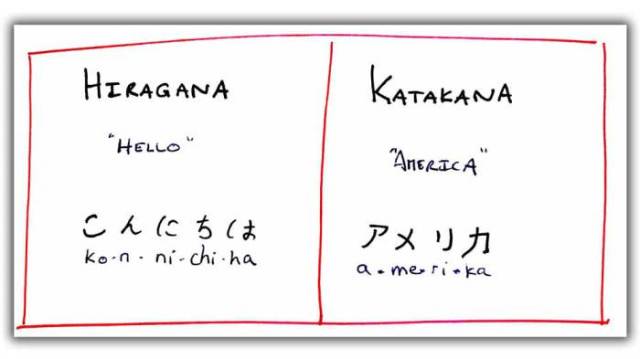Japanese is one of those languages that has two scripts (kanna), namely Hiragana and Katakana. These are the two versions for the same kind of sounds in the Japanese language. Together, Hiragana and Katakana comprise somewhere near to 50 letters, which are basically the simplified version of Chinese characters. They are adopted with the intention of making Japanese script phonetic.

Chinese characters which are called Kanji in Japanese are widely used while writing Japanese. It won’t be wrong to say that most of the words in Japanese language are written in Kanji, including nouns, verbs and adjectives. There are more than 40,000 kanji characters from which about 20,000 represent those 95% characters that are already in use for writing text. As there are no spaces in the Japanese language, therefore Kanji is used to distinguish between various words in a sentence.

Not only this, kanji is also used to discriminate between homophones, which occur very often considering the limited number of sounds availability in the Japanese language. Some people believe that using separate symbols instead of alphabets makes the entire system complicated. Some don’t even favour the idea of adopting Chinese into Japanese. But the sole purpose of kanji is to not worry about the space and moreover the problem of homophones will be solved. If kanji wouldn’t have been there, and spaces need to be added, then the ambiguities and absence of visual cues can make Japanese text very difficult to read.
If we talk about Hiragana, it is mainly used for the grammatical purpose. It represents every sound made in the Japanese language and therefore you can theoretically write anything in Hiragana. You can explore about this while learning about participles. In fact, words that are very difficult or rarely used in Kanji, onomatopoeias, and colloquial expressions are also written in Hiragana.
Hiragana is really not difficult to teach and hence it is used for the beginners of Japanese learning classes and for children who don’t prefer kanji in the first place. Hiragana has similar-sounding English consonant-vowels which are read up to down and then right to life, which is the way how Japanese books are written. While practicing writing in Hiragana, give emphasis to stroke orders and direction of strokes.
Coming to katakana which sounds as Hiragana, it is given preference for the new words that are imported from western countries. It is so because there are no kanji that can be associated with the words evolved from Roman alphabets. It is definitely a tough one to master in comparison to Hiragana as it is used only with a certain set of words. Thus, you don’t get enough scope to do practice with Katakana. One thing to notice here is, the words in Katakana may not be exactly similar as those of English words or would have a different meaning from the English words.
